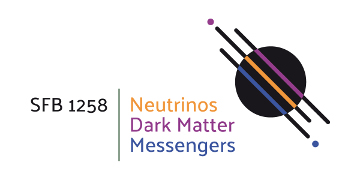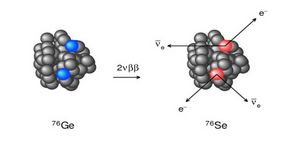The two neutrino-double beta decay is a rare nuclear transition in which two neutrons are simultaneously transformed into two protons, and two electrons and two antineutrinos are created. This radioactive decay is among the rarest processes ever detected and has been observed in several nuclei with half-lives ranging between 1018 to 1024 years.
GERDA final results with unprecedented precision
Pioneering measurements of the two neutrino-double beta decay of 76Ge were performed already in the 90es, while the most recent result was reported by GERDA Phase I in 2017. The analysis presented now by the GERDA collaboration is based on data collected in the Phase II of the project. The two neutrino-double beta decay of 76Ge was evaluated to be 2.022 x 1021 years, with unprecedented precision of only 2%.
Extremely low background due to development at TUM
“We attribute this increased precision to the incredibly low background achieved in GERDA Phase II”, explains Elisabetta Bossio from TUM, who is lead author of the publication. "Thanks to the liquid argon detector developed at TUM, which surrounds the germanium detectors, we could efficiently detect and discard background signals.” A careful data selection further minimized the systematic uncertainties.” What then remains are almost exclusively 2nbb signals. The high-precision measurement of the half-life is then derived from a fit to this spectrum.
Majorana nature of neutrinos still an open question
The overall goal of the GERDA experiment was to measure the hypothetical neutrino-less double beta decay of 76Ge, a process where only two electrons and no anti-neutrinos would be emitted. To this end, high-purity germanium detectors built from material isotopically enriched in 76Ge were operated inside a 64 m3 liquid Argon cryostat at the Gran Sasso underground laboratory (LNGS) in Italy. However, during the operation time of GERDA from 2011 to 2020, no such signal was observed. In the final results published in 2020, the half live of the process was determined to be larger than 1.8 x 1026 years.
Scientists are interested in the process because it offers a unique way to test the longstanding conjecture that neutrinos are Majorana particles, thus their own anti-particles. Its detection would establish Lepton number violation, give access to the neutrino mass scale and provide an important clue for understanding why there is so much more matter than anti-matter in the Universe.
The sensitivity of LEGEND will be within the reach of a detection
The experiences made with GERDA are now being incorporated into the new LEGEND experiment, which is currently being set up at the LNGS using the GERDA infrastructure. With the deployment of 200 kg of 76Ge in the first phase, LEGEND aims to increase sensitivity by an order of magnitude which will bring the experiment within the reach of a detection of neutrino-less double beta decay. Stefan Schönert, Professor of Experimental Astroparticle Physics at TUM, received an ERC grant in 2018 for the development of LEGEND-200. LEGEND-1000, stage two of the experiment, aims to achieve new detection sensitivities up to 1028 years and thus would allow to probe an effective neutrino mass down to 10 meV.
Original publication
Agostini et. al (GERDA collaboration): Final Results of GERDA on the Two-Neutrino Double-β Decay Half-Life of 76Ge
Phys. Rev. Lett. 131, 142501, 3 October 2023
DOI: 10.1103/PhysRevLett.131.142501
Contact
Elisabetta Bossio
Technical University of Munich
School of Natural Sciences
Chair on Experimental Astroparticle Physics
James-Franck-Str. 1, 85748 Garching, Germany
E-Mail: elisabetta.bossio@tum.de



